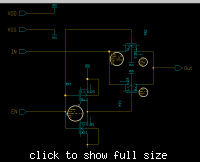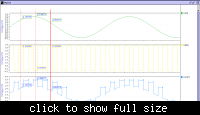pseudockb
Member level 5

site:www.edaboard.com cmos switch
Hi, I would like to know how to determine the size of MOS switches. From what I know, the size should be small in order to have less charge injection but the size should be large to have a small "ON" resistance. Furthermore, I have frequently heard of people making use of half-size dummy switch to reduce charge injection. I would like to know why is it the dummy switch have to be half-size? Another thing that I am not sure of is whether the bulk connection of the NMOS switch should be connected to its source or to the ground. (N-well process) I find that both connection give a different voltage at its terminals. What is the common practice to tie the bulk connection and the reason behind it. Thanks in advance.
Hi, I would like to know how to determine the size of MOS switches. From what I know, the size should be small in order to have less charge injection but the size should be large to have a small "ON" resistance. Furthermore, I have frequently heard of people making use of half-size dummy switch to reduce charge injection. I would like to know why is it the dummy switch have to be half-size? Another thing that I am not sure of is whether the bulk connection of the NMOS switch should be connected to its source or to the ground. (N-well process) I find that both connection give a different voltage at its terminals. What is the common practice to tie the bulk connection and the reason behind it. Thanks in advance.










